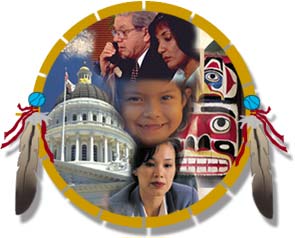Tribal Self-Governance

ISSUE
The Indian Health Service (IHS) Tribal Self-Governance Program recognizes that tribal leaders and members are in the best position to understand the health care needs and priorities of their communities. The number of Tribal Self-Governance Program success stories grows each year, and the IHS supports this success by offering information, technical assistance, and policy coordination.
BACKGROUND
Tribal governments continue to develop innovative solutions to the health care delivery challenges of their communities. Tribes consider the needs and circumstances of their members when selecting from available health care options. Tribes may choose one or a combination of the following options:
- Continue to receive direct health care services offered by the IHS to American Indians and Alaska Natives.
- Use the authority of the Indian Self-Determination and Education Assistance Act (ISDEAA), Titles I and V, to assume responsibility for health care formerly offered by the federal government. Tribes may contract with the IHS through self-determination contracts and annual funding agreements under Title I or self-governance compacts and funding agreements under Title V.
- Fund the establishment of their own programs or supplementation of ISDEAA programs.
Congress recognized the importance of tribal decision-making in tribal affairs and the importance of the nation-to-nation relationship between the United States and Tribes through the passage of the ISDEAA (Public Law 93-638) in 1975. Subsequent amendments to the ISDEAA strengthened the federal policies supporting tribal self-determination and self-governance. In 1992, Congress amended the ISDEAA to authorize a Tribal Self-Governance Demonstration Project within the IHS, giving federally recognized Tribes the option of entering into self-governance compacts to gain more autonomy in the management and delivery of their health care programs. That same year, the IHS established the Office of Tribal Self-Governance to oversee the implementation of the Tribal Self-Governance Program. By the end of 1994, 14 Tribes exercised their option to enter into self-governance compacts. In 2000, Congress passed the Tribal Self-Governance Amendments (Public Law 106-260) to create Title V of the ISDEAA and authorize the IHS Tribal Self-Governance Program (25 U.S.C. § 458aaa et seq.; 42 C.F.R. Part 137).
STATUS
Today, self-governance compacting affords Tribes the most flexibility to tailor health care services to the needs of their communities. Tribes overwhelming agree that having the ability to create a comprehensive approach to health services is the greatest benefit of the Tribal Self-Governance Program. Other benefits include improved communication between tribal programs; partnerships with state and local governments to provide services; innovative health programs; establishment of the Tribal Self-Governance Advisory Committee; and creation of the Office of Tribal Self-Governance to serve as a federal-tribal liaison, offer technical assistance to Tribes, coordinate and lead policy discussions, and provide access to the IHS Director. Program success is demonstrated by the increasing number of Tribes choosing to participate. As of July 2016, the IHS and Tribes have negotiated 90 self-governance compacts that are funded through 115 funding agreements with over 350 (or 60 percent) of the 567 federally recognized Tribes. This program constitutes approximately $1.8 billion (or nearly 40 percent) of the IHS budget.
OPTIONS/PLANS
The IHS will continue to support and promote tribal self-governance.
ADDITIONAL INFORMATION
For referral to the appropriate spokesperson, contact the IHS Public Affairs Staff at 301-443-3593.July 2016
Download this Fact Sheet [PDF - 43 KB]


